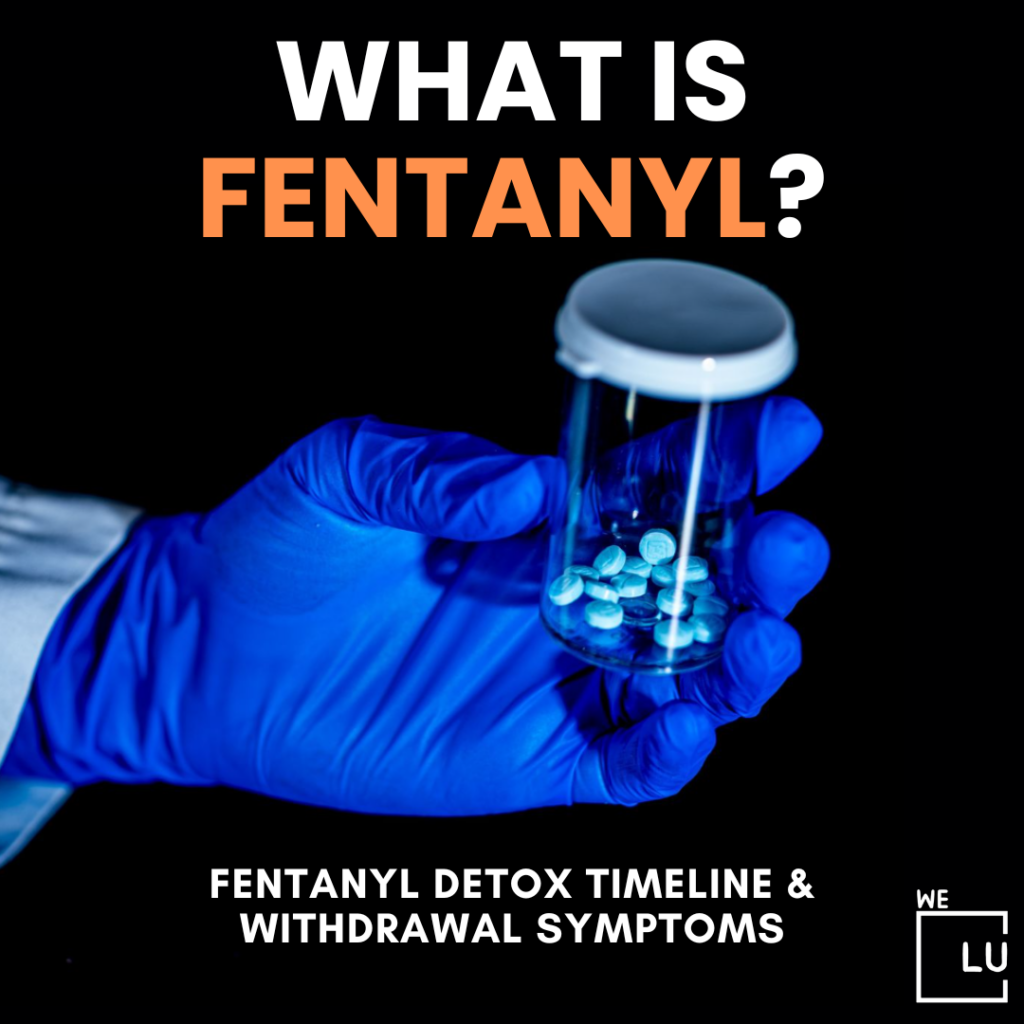Fentanyl Vs Carfentanil Dangers
Fentanyl and Carfentanil are prescription drugs that are used for medical purposes. They are also made illegal and added to street drugs like heroin, cocaine, and methamphetamine. They are known to be added to counterfeit pills as well and can cause death within seconds. Both drugs are known to be a huge risk to first responders such as law enforcement, emergency responders, and healthcare professionals
What is Fentanyl And Carfentanil?
Fentanyl is a synthetic opioid medication that functions similarly to morphine. It is more potent, 50 to 100 times stronger, and is primarily used to alleviate severe pain following surgeries. Additionally, it can be used to alleviate pain in terminally ill cancer patients. Fentanyl is also known for affecting the central nervous system. This includes the part that regulates heart rate which can cause abnormal heart rhythms.
Carfentanil is another synthetic opioid that’s used as a tranquilizer for large animals like hippos and elephants It is 10,000 times stronger than morphine and 100 times more potent than Fentanyl. Unlike Fentanyl, Carfentanil gained attention for its production and distribution in the illegal drug market.
What is the difference between Fentanyl and Carfentanil?
Fentanyl is a drug that is produced illegally and often added to others to increase their strength. Unfortunately, this can lead to accidental deaths due to overdose because of its strength. Individuals need to be aware of the risks associated with Fentanyl, and for healthcare professionals to monitor its use to prevent negative effects.
In contrast, Carfentanil isn’t for human consumption and can’t be used for medicinal purposes. Since it’s more potent than Fentanyl even the smallest amount can be deadly. This drug has been linked to multiple cases of overdose because it has been illegally produced and mixed with other drugs.
What Are The Symptoms
Fentanyl and Carfentanil share the same symptoms, but because Carfentanil is more potent, the risk is higher. These symptoms include:
- Respiratory Depression: Slow or shallow breathing is the hallmark symptom that a person has used an opioid drug.
- Lethargic & Drowsiness: If someone is taking either Fentanyl or Carfentanil, they may appear sleepy, lethargic, or can be constantly nodding off.
- Confusion and Disoriented: Confusion or disorientation may occur. People may have trouble focusing, processing information, or maintaining logical thoughts.
- Nausea and Vomiting: Both Fentanyl and Carfentanil can cause nausea and vomiting, leading to dehydration and electrolyte imbalances.
- Pinpoint Pupils: Having constricted pupils is a sign of opioid use. Individuals taking both Fentanyl and Carfentanil might have tiny pupils which is a case of overdose use.
- Weakness and Dizziness: Weakness, dizziness, and lightheadedness can result from using these drugs, which may cause difficulty maintaining balance.
- Loss of Consciousness: This only happens when a person has overdosed and is unresponsive to any stimuli. This is a critical sign of a medical emergency and immediately call 911.
- Cold or Clammy Skin: When an individual overdoses, their skin becomes cold, pale, or has a bluish tint to the skin.
- Cardiac Effects: Both Fentanyl and Carfentanil affect the cardiovascular system. A person taking them has a slow heart rate and other cardiac issues.
- Hypotension (Low Blood Pressure): Individuals taking these drugs tend to have low blood pressure which causes dizziness and fainting.
Fentanyl Vs Carfentanil: The Various Forms
Fentanyl and Carfentanil can be found in various forms, either in medical use or illegal production. The common forms include:
Pharmaceutical and Veterinary Uses: Fentanyl is commonly prescribed in the form of dermal(skin) patches so that there’s a controlled release of the drug over an extended period. The second form is a medicinal tablet that dissolves in the mouth to be absorbed quickly. The last thing it can be is an injectable solution that is given through an IV or in the back for body pain. However, Carfentanil only has one form used for veterinary purposes as a tranquilizer to be injected into the muscles of large animals.

Illegal Usage and Mixture of Other Drugs: Both drugs come in the form of a white powder that is mixed with other substances or a nasal spray that allows them to be absorbed through the nasal cavities. Fentanyl though has also been made in the form of pills or tablets. They are sometimes disguised as other medicines like oxycodone that have been found in the illegal drug market. Carfentanil is commonly used in powder form because it is a booster to other opioids like heroin. This causes a huge risk of overdose since it’s so potent.


Get Your Life Back
Find Hope & Recovery. Get Safe Comfortable Detox, Addiction Rehab & Dual Diagnosis High-Quality Care.
FREE Addiction Hotline – Call 24/7Warnings for First Responders & The Public
First responders, such as law enforcement officers, emergency medical services personnel, and firefighters, face exceptional challenges and risks when dealing with situations involving Fentanyl and Carfentanil because of the potent nature of these synthetic opioids. Therefore, first responders must consider the following key considerations to ensure their safety when dealing with such situations.
Risk of Exposure
The risk of being exposed is common since Fentanyl and Carfentanil can become airborne and inhaling even a small amount can lead to overdose. First responders should be cautious when entering a place where these substances may be present. Personal Protective Gear (PPE) should be used including gloves, masks, and eye protection to minimize the risk of skin contact and inhalation. The opioid receptor Naloxone (Narcan) should always be available to use to reverse opioid overdose. All first responders should receive training on recognizing the signs of overdose and how to properly handle the substance without being exposed.
It is crucial for all agencies and parties involved to maintain constant communication. Sharing effective and accurate information can ensure the safety of everyone. First responders should be familiar with decontamination protocols as well which include procedures for cleaning equipment and themselves after exposure to Fentanyl and Carfentanil. They should have testing and detection equipment with them at all times so they can identify the presence of these opioids quickly to determine the risk in the environment.
Public Awareness
This is vital when dealing with Fentanyl and Carfentanil and first responders should contribute to community education about the dangers of these opioids. They should inform the community about the proper disposal of drugs and safe practices. First responders should collaborate with medical professionals to ensure a smooth transition from the field to medical care if ever exposed to Fentanyl and Carfentanil. Legal protections should shield them from potential legal consequences because they administered Naloxone or other life-saving interventions. Here are some ideas to help with public awareness.
Education Campaigns are a great way to provide clear and targeted messages about the risks associated with Fentanyl and Carfentanil use, explaining their potency and potential for overdose. In this modern technological world, it’s better to utilize a variety of media channels such as social media, TV, radio, and magazines so that the information reaches a broad audience. Creating online platforms and apps with accurate information, resources, and tools can help individuals seeking information about these drugs. These campaigns can also be used to educate about the signs of overdose on Fentanyl and Carfentanil and provide Naloxone (opioid receptor) training.
Promoting Access to Treatment encourages individuals to seek help without fear of judgment. Working with community organizations, schools, healthcare providers, and law enforcement to spread information about the dangers of Fentanyl and Carfentanil can reduce the risk of someone becoming addicted to them. It will help to appoint someone like a community leader or influencer to amplify the message and increase its impact. These individuals can help establish or enhance surveillance systems to monitor opioid-related overdoses. These campaigns should be ongoing and adaptable to effectively address the challenges associated with Fentanyl and Carfentanil.
Street Names for Fentanyl Carfentanil
Fentanyl has various names on the street or in the illegal drug market. Some names or slang terms include:
- Apache
- China Girl
- China White
- China Town
- Dance Fever
- Friend
- Goodfella
- Jackpot
- Murder 8
- TNT
- Poison
- Tango and Cash
Carfentanil has only a few names since it’s so dangerous. Some names or slang terms include:
- Carfentanyl
- Carfent
- Gray Death: This term is used to regard extremely potent opioid mixtures, and Carfentanil was still added to it.
- Serial Killer
Get Help. Get Better. Get Your Life Back.
Searching for Accredited Drug and Alcohol Rehab Centers Near You? We Level Up Texas Is Opening Soon!
Even if you have failed previously and relapsed, or are in the middle of a difficult crisis, we stand ready to support you. Our trusted behavioral health specialists will not give up on you. When you feel ready or just want someone to speak to about therapy alternatives to change your life call us. Even if we cannot assist you, we will lead you to wherever you can get support. There is no obligation. Call our network hotline today.
FREE Addiction Hotline – Call 24/7Withdrawal Symptoms
Withdrawal from opioids such as fentanyl and carfentanil can be a challenging process and the symptoms can be severe. Ideally, a person going through withdrawal should be guided by a medical professional.
Early Symptoms (Within a few hours)
- Agitation
- Anxiety
- Muscle Aches
- Insomnia
- Runny nose and teary eyes
- Excessively sweating
Later Symptoms (24-72 Hours)
- Gastrointestinal Issues (Vomiting, Nausea, Diarrhea)
- Dilated Pupils
- Goosebumps
- Abnormal Cramping
Peak Symptoms (72 Hours)
- Intense Drug Cravings
- Depression
- Intense Fatigue
- Tremors
- Increased Heart Rate & Blood Pressure

Fentanyl and Carfentanil Addiction Treatment Options
Since both Fentanyl and Carfentanil are considered the same drug (opioids), they require the same treatment administrations and medical attention. Some key aspects of treating them are:
- Naloxone: it’s an opioid receptor that can rapidly reverse the effects of someone who has overdosed on these drugs. Fentanyl and Carfentanil are extremely potent, so higher or multiple doses of this receptor are necessary.
- Emergency Medical Attention: Call 911 immediately if you suspect someone has overdosed. Emergency medical professionals will monitor vital signs, provide respiratory support (if needed), and manage any other symptoms. Respiratory support will be needed if the person has severe respiratory depression and may need mechanical ventilation support to help keep oxygen flowing.
- Hospitalization: Once they have arrived at the hospital, they’re immediately sent to the ICU (Intensive Care Unit) for close monitoring and to be provided any medical intervention when needed. Individuals who were able to be sent home would need ongoing medical care beyond the hospital. They would need to be monitored for any complications such as pulmonary edema or respiratory depression syndrome.
- Psychosocial Support: Following an overdose, individuals may be referred to substance abuse treatment programs and counseling at their local treatment center or We Level Up Texas Treatment Center. Educating friends and family will help spread awareness in the community and create strategies to prevent others from being exposed to or using these drugs.
Discover effective addiction and mental health therapy at the We Level Up Texas Treatment Center. Get professional counseling that works by contacting our addiction hotline for free support.
Opening Soon! World-class, Accredited, Anticipated 5-Star Reviewed, Effective Addiction & Mental Health Programs. Complete Behavioral Health Inpatient Rehab, Detox plus Co-occuring Disorders Therapy.
FREE Addiction Hotline – Call 24/7End the Addiction Pain. End the Emotional Rollercoaster. Get Your Life Back. Start Drug, Alcohol & Dual Diagnosis Mental Health Treatment Now. Get Free No-obligation Guidance by Substance Abuse Specialists Who Understand Addiction & Mental Health Recovery & Know How to Help.
The Path to Recovery
Recovering from Fentanyl and Carfentanil addiction can be challenging and most individuals require medical professional help. Since both opioids are extremely potent, overcoming the addiction to them involves a combination of medical, psychological, and social support. The general steps individuals may take in their path to recovery include:
Medical Detoxification
This process clears the toxins from the body of the patient who is acutely intoxicated and/or dependent on substances of abuse. Due to the potent nature of Fentanyl and Carfentanil, this treatment is necessary. It involves gradually tapering the dosage (over time) under medical guidance to minimize withdrawal symptoms and reduce the risk of complications. There are 3 phases to this process.
Phase 1: Evaluation
This tests for the presence of Fentanyl and Carfentanil in the bloodstream and measures the concentration. It also screens for co-occurring mental and physical conditions. It includes the patient’s medical and psychological conditions and social situations so that they are provided with the appropriate level of treatment.
Phase 2: Stabilization
This includes the medical and psychosocial processes of assisting the patient through acute withdrawal to a fully supported substance-free state. This phase is done with medications although sometimes it can be done without. At this stage, patients are familiarized with what to expect during their treatment and recovery. It helps to seek the involvement of family and friends.
Phase 3: Treatment
This last and final phase prepares the patient for entry into Fentanyl and Carfentanil overdose treatment by stressing the importance of following through with a complete treatment plan that was provided by their medical professional. A written contract, which is not legally bound and completely voluntary, states that the patient will agree to participate and continue the treatment plan.
Inpatient/Outpatient Rehab Programs
Inpatient programs provide a structured and supportive environment where individuals can focus on their recovery without being exposed to their triggers. However, outpatient programs allow them to receive treatment at home by attending therapy sessions, sitting in support groups, and receiving counseling. Individual or group therapy can address the psychological aspects of addiction and help them understand and manage their underlying issues when it comes to their addiction.
Medication -Assisted Treatment (MAT)
Medication can help manage cravings and withdrawal symptoms. They can be prescribed under the supervision of a medical professional. MAT can help stabilize individuals during the detox process and increase the likelihood of successful engagement in further treatment. Some medications prescribed are Methadone, Buprenorphine, Naltrexone, Clonidine, and Lofexidine.
Opioid Medication
- Methadone is a long-acting opioid antagonist that helps reduce cravings and withdrawal symptoms. This medication is often used in supervised maintenance programs during detox.
- Naltrexone is another opioid that blocks the effects of Fentanyl and Carfentanil; this medication is normally used after the detoxification process to prevent relapse. It can be in a pill taken every day or an extended-release injection.
- Buprenorphine is a limited opioid that can be used to help with withdrawal symptoms. It has a ceiling effect and reduces the risk of respiratory depression and overdose.
Non-Opioid Medication
- Clonidine is not an opioid and is sometimes used to alleviate certain withdrawal symptoms. This includes anxiety, agitation, and high blood pressure.
- Lofexidine is not an opioid as well, but it is used to manage the withdrawal of Fentanyl and Carfentanil. The Federal Drug Administration (FDA) specifically approved this medication to counteract opioids.
Overcoming addiction is often a challenging process to go through alone, especially for those addicted to opioids such as Fentanyl and Carfentanil. Many people experience relapses during withdrawal in an attempt to alleviate symptoms and satisfy cravings. However, you can manage these symptoms and successfully recover with detox and rehab therapy with a robust support system at the We Level Up Texas Treatment Center. If you require assistance with your rehab journey, contact a We Level Up Treatment professional now. Your call is free and confidential.
Get a free rehab insurance check without any obligation.
(search here https://www.youtube.com/@weleveluptreatmentcenter1361/videos)
Start a New Life
Begin with a free call to an addiction & behavioral health treatment advisor. Learn more about our dual-diagnosis programs. The We Level Up treatment center network delivers recovery programs that vary by each treatment facility. Call to learn more.
- Personalized Care
- Caring Accountable Staff
- World-class Amenities
- Licensed & Accredited
- Renowned w/ 100s 5-Star Reviews
We’ll Call You







